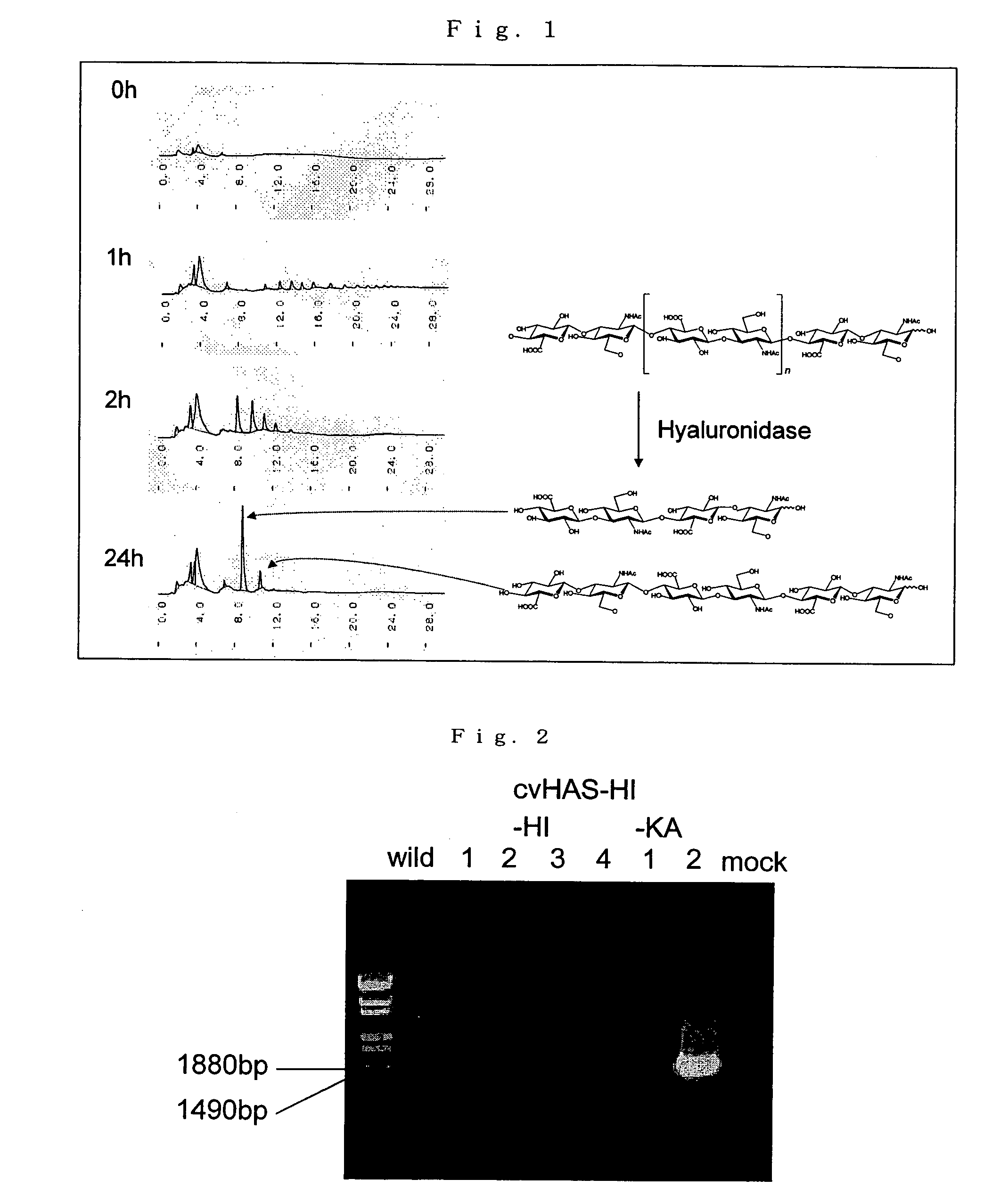Plant producing hyaluronic acid
a technology of hyaluronic acid and plant, applied in the direction of enzymology, organic chemistry, transferases, etc., can solve the problems of slow growth rate, difficult maintenance, and expensive media
- Summary
- Abstract
- Description
- Claims
- Application Information
AI Technical Summary
Benefits of technology
Problems solved by technology
Method used
Image
Examples
examples
1. Isolation of Hyaluronic Acid Synthase Gene Derived from Chlorella Virus
[0107]PCR primers were made in order to isolate a chlorella virus hyaluronic acid synthase gene (cvHAS) by PCR. The primers were designed with reference to sequence information of chlorella virus genome already shown (Kutish et al, 1996, Virology, 223, 303-317) (Li et al, 1995, Virology, 212, 134-150) (Li et al, 1997, Virology, 237, 360-377) (Lu et al, 1995, Virology, 206, 339-352) (Lu et al, 1996, Virology, 216, 102-123) and identification information of the hyaluronic acid synthase gene derived from chlorella virus (DeAngelis et al, 1997, Science, 278, 1800-1803), and made by adding restriction enzyme sites required for introducing into an expression vector. As the restriction enzyme sites, NdeI site was added to the 5′-primer and XbaI site was added to the 3′-primer.
[0108]
5′-primer5′ - GCC GCC GCA TAT GGG TAA AAA TAT(SEQ ID NO:3)AAT CAT AAT GGT TTC G - 3′3′-primer5′ - CTT GCA GTC TAG ATC ACA CAG ACT(SEQ ID ...
PUM
| Property | Measurement | Unit |
|---|---|---|
| pH | aaaaa | aaaaa |
| total volume | aaaaa | aaaaa |
| pH | aaaaa | aaaaa |
Abstract
Description
Claims
Application Information
 Login to View More
Login to View More - R&D
- Intellectual Property
- Life Sciences
- Materials
- Tech Scout
- Unparalleled Data Quality
- Higher Quality Content
- 60% Fewer Hallucinations
Browse by: Latest US Patents, China's latest patents, Technical Efficacy Thesaurus, Application Domain, Technology Topic, Popular Technical Reports.
© 2025 PatSnap. All rights reserved.Legal|Privacy policy|Modern Slavery Act Transparency Statement|Sitemap|About US| Contact US: help@patsnap.com

